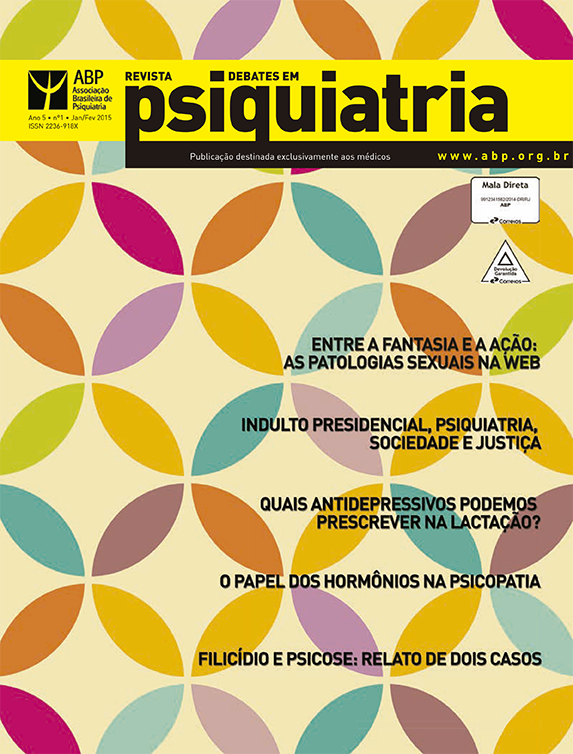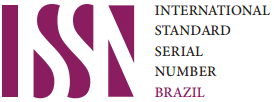The role of hormones in psychopathy
DOI:
https://doi.org/10.25118/2763-9037.2015.v5.179Keywords:
Hormones, antisocial personality disorder, central nervous systemAbstract
Hormones play an important role in understanding the biological basis of psychopathy and antisocial personality disorder. Hormone systems can be influenced by genetic and environmental factors, and therefore can influence brain function. As biological markers, hormones can provide enlightening clues about what takes place in the brain of a psychopath. At present, the two hormones most strongly involved in psychopathy, with their respective axes, are cortisol and testosterone. This article aims to correlate the cognitive, emotional, and behavioral manifestations of psychopathic personality with neuroendocrine imbalances.
Downloads
Metrics
References
Burgess A. A clockwork orange. London: Heinemann; 1962.
Gao Y, Glenn AL, Schug RA, Yang Y, Raine A. The neurobiology of psychopathy: a neurodevelopmental perspective. Can J Psychiatry. 2009;54:813-23.
Cleckley H. The mask of ssanity. St. Louis: Mosby; 1941.
Glenn AL, Raine A. Psychopathy: an introduction to biological fi ndings and their implications. New York: New York University Press; 2014.
Brown GR, Spencer KA. Steroid hormones, stress and the adolescent brain: a comparative perspective. Neuroscience. 2013;249:115-28.
Feilhauer J, Cima M, Korebrits A, Nicolson NA. Salivary cortisol and psychopathy dimensions in detained antisocial adolescents. Psychoneuroendocrinology. 2013;38:1586-95.
Glenn AL, Raine A, Schug RA, Gao Y, Granger DA. Increased testosterone-to-cortisol ratio in psychopathy. J Abnorm Psychol. 2011;120:389-99.
Juruena MF, Cleare AJ, Pariante CM. [The hypothalamic pituitary adrenal axis, glucocorticoid receptor function and relevance to depression]. Rev Bras Psiquiatr. 2004;26:189-201.
Checkley S. The neuroendocrinology of depression and chronic stress. Br Med Bull. 1996;52:597-617.
Nemeroff CB. The corticotropin-releasing factor (CRF) hypothesis of depression: new fi ndings and new directions. Mol Psychiatry. 1996;1:336-42.
Schulkin J, Gold PW, McEwen BS. Induction of corticotropin-releasing hormone gene expression by glucocorticoids: Implication for understanding the states of fear and anxiety and allostatic load. Psychoneuroendocrinology. 1998;23:219-43.
Böhnke R, Bertsch K, Kruk MR, Naumann E. The relationship between basal and acute HPA axis activity and aggressive behavior in adults. J Neural Transm. 2010;117:629-37.
Kudielka BM, Kirschbaum C. Sex differences in HPA axis responses to stress: a review. Biol Psychiatry. 2005;69:113-32.
Rosen JB, Schulkin J. From normal fear to pathological anxiety. Psychol Rev. 1998;105:325-50.
Patrick CJ. Emotion and psychopathy: startling new insights. Psychophysiology. 1994;31:319-30.
Benning SD, Patrick CJ, Iacono WG. Fearlessness and underarousal in psychopathy: Startle blink modulation and electrodermal reactivity in a young adult male community sample. Psychophysiology. 2005;42:753-62.
Birbaumer N, Viet R, Lotze M, Erb M, Hermann C, Grodd W, et al. Defi cient fear conditioning in psychopathy: a functional magnetic resonance.
Downloads
Published
How to Cite
Conference Proceedings Volume
Section
License

This work is licensed under a Creative Commons Attribution-NonCommercial 4.0 International License.
Debates em Psiquiatria allows the author (s) to keep their copyrights unrestricted. Allows the author (s) to retain their publication rights without restriction. Authors should ensure that the article is an original work without fabrication, fraud or plagiarism; does not infringe any copyright or right of ownership of any third party. Authors should also ensure that each one complies with the authorship requirements as recommended by the ICMJE and understand that if the article or part of it is flawed or fraudulent, each author shares responsibility.
Attribution-NonCommercial 4.0 International (CC BY-NC 4.0) - Debates em Psiquiatria is governed by the licencse CC-By-NC
You are free to:
- Share — copy and redistribute the material in any medium or format
- Adapt — remix, transform, and build upon the material
The licensor cannot revoke these freedoms as long as you follow the license terms. Under the following terms:
- Attribution — You must give appropriate credit, provide a link to the license, and indicate if changes were made. You may do so in any reasonable manner, but not in any way that suggests the licensor endorses you or your use.
- NonCommercial — You may not use the material for commercial purposes.
No additional restrictions — You may not apply legal terms or technological measures that legally restrict others from doing anything the license permits.






























